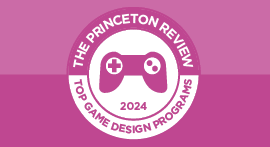Computer Graphics
Overview
Highly technical yet completely artistic, computer graphics blends elements of a computer science major and elements of an art major into one exciting four-year ride. Students will be expected to draw on aspects from both fields and use them to succeed. You’ll learn the basics—and the not-so-basics—of computer programming and a variety of computer applications and you’ll practice computer-based graphic design and the programming of graphic systems. With the rapid advancements being made in this field, you’ll never run out of new things to discover and use in your work. And it’s not all about knowing the nuts and bolts of how to do it, either; throughout this major you’ll be developing your own digital aesthetic, so your graphic creations are truly yours.
Creative types will enjoy projects that incorporate computer-based imaging, two-dimensional and three-dimensional design, and photography. Different college programs offer different concentrations, such as animation, interactive multimedia, or construction graphics, which can lead computer graphics majors in any number of directions. You might use your skills to pursue engineering or architecture, develop Web technologies, produce spectacular CD-ROMs, or become a specialist in computer-aided design (CAD). Whatever your job, you’ll use your background in both computers and art to create computer graphics that entertain, persuade, assist, and inform your intended audience.
- $55,784 Tuition
- 1370 Avg SAT
- 14,001 Enrolled
View All Computer Graphics Schools
SAMPLE CURRICULUM
Color Photography
Computer Graphics
Computer Programming
Digital Photography
Fundamentals of Drawing
Mathematics
Multimedia Authoring
Three-Dimensional Design
Two-Dimensional Design
Web Development
Web Page Design
Windows-Based Application Development
HIGH SCHOOl PREPARATION
Since many computer graphics programs are tied to math, computer, and art departments, getting a strong foundation in upper-level math courses (like calculus) and computer courses is essential. Art courses would strengthen your abilities in original thought, visual harmony, and effective design. Since much of computer graphics is about communication, you should also polish your reading and writing skills in English and language courses. The best preparation of all may actually be the work you do on your own—experimenting with your own computer, drawing, and creating up a storm.
GRADUATE PROGRAMS & CAREERS
Explore Colleges For You
Connect with our featured colleges to find schools that both match your interests and are looking for students like you.
Top Schools for Game Design
Ready to create the next great app? Launch your gaming career at one of these top 50 programs.
Best 390 Colleges
168,000 students rate everything from their professors to their campus social scene.
Get Started on Athletic Scholarships & Recruiting!
Join athletes who were discovered, recruited & often received scholarships after connecting with NCSA's 42,000 strong network of coaches.



